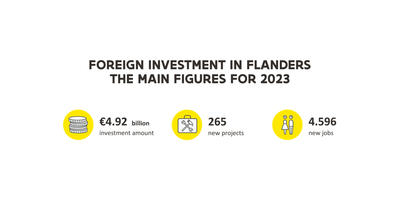
Green light for Flanders' first green hydrogen plant

Important milestone for the energy transition
Targeting an annual production of 3,500 to 4,000 tons of hydrogen that meets the highest standards for transportation, Hyoffwind is set out to significantly boost the clean energy economy in Flanders and Europe. The first-ever green hydrogen facility in the region of Flanders is expected to be operational in 2024 and will start out by converting 25 MW of renewable energy. As demands rise, production can be ramped up to as much as 100 MW.
Once produced, the hydrogen will be transported both with pipelines and tankers, to feed the natural gas grid and industrial hydrogen users at home and abroad. Next to that, it will be used to balance the electricity grid. As such, Hyoffwind aims to boost all players in the hydrogen value chain: from production to transportation and delivery. This way, the revolutionary green facility can fuel the hydrogen economy in Flanders.
A Europe-wide import and transit hub
But this green energy project has the power to seep through to the European hydrogen strategy as well. Belgian gas grid operator Fluxys and Virya Energy, the energy holding company established by Colruyt Group and Korys – who are spearheading Hyoffwind – envision the facility to act as both an energy and logistics hub for hydrogen-linked applications in the EU.
The Zeebrugge port area of Flanders’ Port of Antwerp-Bruges is indeed the perfect host for this ambitious sustainability gamechanger. Also home to the worlds’ first (!) large-scale wind energy park, the port boasts a close-knit innovational environmental tech business and knowledge ecosystem and strives for full climate neutrality by 2050.


